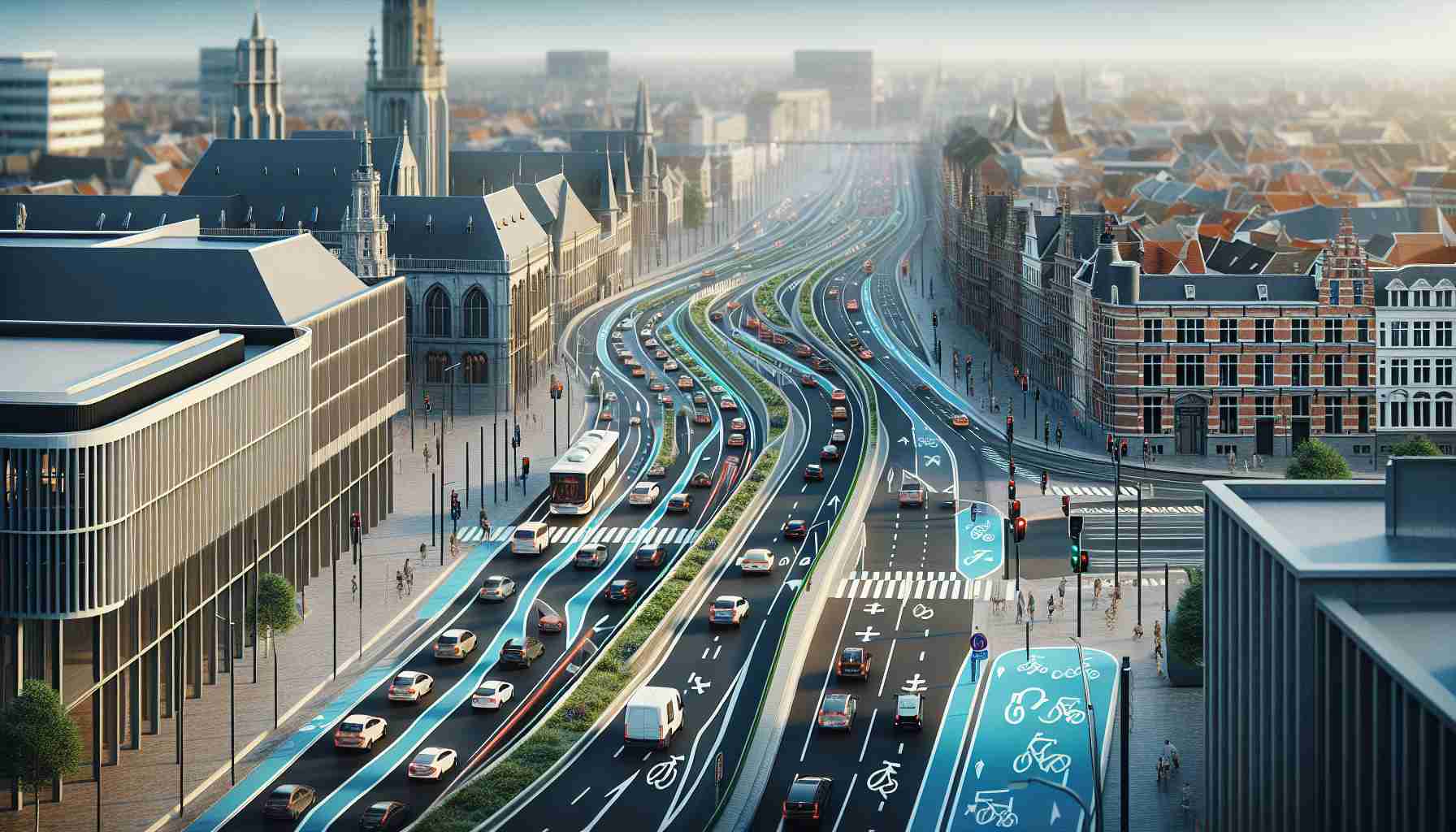
Revamped Traffic Measures in Antwerp
Antwerp Enhances Traffic Regulations Around Waasland Tunnel
Antwerp has revamped traffic regulations surrounding the historic Waasland Tunnel, limiting access exclusively to local traffic. Initially constructed in 1933 with one lane in each direction, the tunnel was not designed for heavy traffic flow. However, in recent years, an increasing number of drivers have utilized it as an alternative route to the Kennedy Tunnel, causing strain on the aging structure, fondly referred to as the ‘Rabbit Pipe.’
Recognizing the urgent need for comprehensive renovations, authorities have imposed temporary traffic control measures, including reducing the speed limit within the tunnel from 50 to 30 km/h, to mitigate potential incidents and minimize further deterioration. Additionally, heavy-duty vehicles have been rerouted to alleviate pressure on the tunnel infrastructure.
In a move to further alleviate congestion, signs indicating “Except for Local Traffic” have been installed at the tunnel’s entrances. This alteration restricts passage through the tunnel to residents traveling between downtown Antwerp and Left Bank exclusively. Through traffic has been directed to utilize alternative river-crossing routes via the Kennedy Tunnel (R1) or Liefkenshoek Tunnel (R2, toll required).
The impending completion of the new Scheldt Tunnel as part of the Oosterweel Connection project by 2030 aims to further alleviate traffic congestion around the region, offering long-term relief to commuters and enhancing transportation infrastructure in Antwerp.
Enhanced Traffic Measures in Antwerp: Navigating the Evolving Landscape
Antwerp’s commitment to improving traffic management extends beyond the recent enhancements around the Waasland Tunnel. As the city grapples with growing urbanization and increased vehicular activity, authorities have introduced a series of innovative measures to address congestion and enhance overall commuting experiences.
Key Questions:
1. How are residents and businesses adapting to the revised traffic regulations in Antwerp?
2. What are the anticipated impacts of the upcoming Scheldt Tunnel on traffic patterns in the region?
Key Challenges and Controversies:
While the revamped traffic measures aim to streamline traffic flow and bolster infrastructure resilience, some challenges and controversies persist. One notable concern is the potential displacement of through traffic onto alternative routes, leading to congestion in other parts of the city. Additionally, the enforcement of restrictions on non-local traffic has sparked debates regarding accessibility and equitable mobility within Antwerp.
Advantages:
1. Improved Safety: By limiting heavy-duty vehicles and regulating speed limits, the revamped measures prioritize safety for motorists navigating the tunnel.
2. Enhanced Efficiency: Redirecting through traffic to designated routes promotes smoother traffic flow and reduces congestion, benefiting both residents and commuters.
3. Environmental Impact: Shifting traffic patterns can have positive environmental implications, such as reduced emissions and improved air quality in the vicinity of the tunnel.
Disadvantages:
1. Accessibility Concerns: Restrictions on through traffic may inconvenience certain commuters or businesses reliant on efficient cross-city transportation routes.
2. Enforcement Challenges: Ensuring compliance with the updated regulations may present enforcement challenges for authorities, particularly in monitoring passage by non-local vehicles.
3. Potential Economic Impacts: Changes to traffic routes could impact local businesses dependent on passing trade, potentially affecting economic activities in the area.
As Antwerp continues to evolve its traffic management strategies, stakeholders are encouraged to stay informed about ongoing developments and adapt their travel plans accordingly to navigate the changing urban landscape effectively.
For more information on transportation initiatives in Antwerp, visit Antwerp’s official website.
















